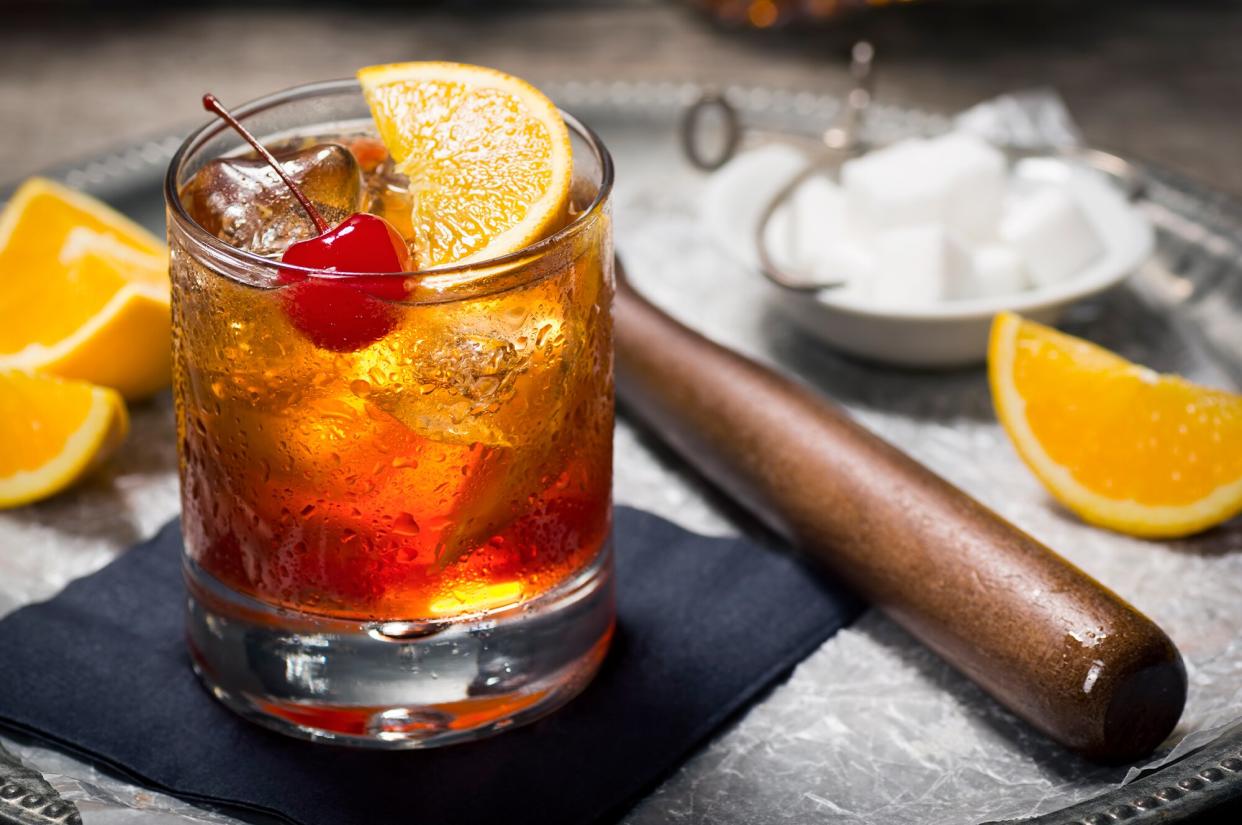How to Muddle Ingredients for a Cocktail—Even If You Don't Have a Muddler

viennetta / Getty Images
Muddle, muddle, is it worth the trouble? In the creative universe of mixology a sometimes-unfamiliar instruction sneaks in to disturb the peace. You have to muddle something. An herb, some fruit. What's this muddling? Is it crushing? Bruising? Blending? Squeezing? Could it be smooshing, and is that the same as smashing? Can you muddle the wrong way? Do you need a muddler? We'll help you…muddle through it.
Related: The Best Bar Tools for Mixing Drinks at Home
What Is Muddling
When you muddle, you are introducing solid ingredients—like sugar, herbs, fruit, or peel—to a drink by bruising them gently to release and transfer their flavor. The tool you use is a muddler. Muddling is usually done in the glass and the ingredients that are muddled are added first, then are joined by whatever liquids are called for.
Muddling has been around since mixologists were bartenders and cocktails were all high-octane. A typical instruction for a classic muddled cocktail, a mint julep, would read: "Muddle mint, sugar, and water in a tall glass. Fill with ice. Add bourbon." Other examples of muddled drinks include rum-based mojitos (mint with sugar), and cachaça-based caipirinhas (sugar with lime). But the beauty of muddling is that it allows you to be creative. Herbs and fruits combined with syrups, even sipping vinegars, can be the base of a kaleidoscope of mixed drinks, with or without alcohol.
The Technique Is More Popular Than Ever
In a low-ABV world, where low-alcohol or no-alcohol by volume mixed drinks have claimed equal status with their boozy counterparts, muddling has become more popular. Why? "Without help from the ethanol in alcohol to extract flavor, herbs, and fruit don't infuse their flavor into a drink as easily when it's non-alcoholic," says Laura Lashley, on-premise manager, non alcohol, at Diageo North America, which owns Seedlip. "Releasing the oils in herbs or lightly smashing the fruit with gentle muddling is a great way to amp up the flavors." One of Lashley's creations is a Pineapple Jalapeño Margarita, where Seedlip Garden 108 is muddled with slices of jalapeño, agave syrup, pineapple juice, and lime juice.
...But It Has its Detractors
"Muddling? I'm against it," says Piper Kristensen, the beverage director at the Michelin-starred restaurant Oxalis, in Brooklyn, N.Y. Kristensen believes that muddling "is a very brutal way to extract flavors" and that it can introduce unintended vegetal flavors to a drink when the chorophyll in bruised leaves is released.
"You can smash it with a muddler, or abrade it with sugar," he says, the latter being his technique. So mint, for example, would be tossed gently with sugar to sit for some hours to extract its essential oils "from the hairs on the back of its leaves." Only the infused sugar is incorporated in the drink. He also feels that this method is more exact than muddling, in terms of replicating recipes precisely. Finally, to put the last nail in the muddling coffin, Oxalis is "a no-garnish bar" to align with its clean aesthetic, so floating bits and bobs in drinks are banned.
How to Muddle
Perhaps you like the aesthetic of fresh herbs in a tall, cool drink and you want to muddle. How do you go about it? Place the required botanicals—herbs, citrus peel, or fruit (like raspberries) in the bottom of a sturdy glass (with sugar, if called for). Insert your muddler, then press and twist. "Light pressure does the trick," says Lashley. "You don't need to pulverize! No one likes having tiny pieces of mint stuck in their teeth after taking a sip!"
What Is a Muddler?
Muddling tools look like elongated pestles (your mortar is a tall glass or a cocktail shaker). The muddler is long enough to reach the bottom. It may be cylindrical or might have a slender waist. The base of the muddler is sometimes textured or toothed (like a mini meat tenderizer), or smooth. Textured muddlers tend to tear up ingredients, so choose a smooth one. Muddlers are made of bamboo, wood, stainless steel, plastic, or even glass; sleek and modern, or pleasingly vintage.
Caring for your muddler is as easy as rinsing it and drying it. If it is wooden, take care not to leave it wet, and don't clean it in the dishwasher.
Do You Even Need a Muddler?
No. Any blunt kitchen tool, like a wooden mixing spoon, will do the trick as a muddler (we use one for our mint juleps). Just press, and twist.

